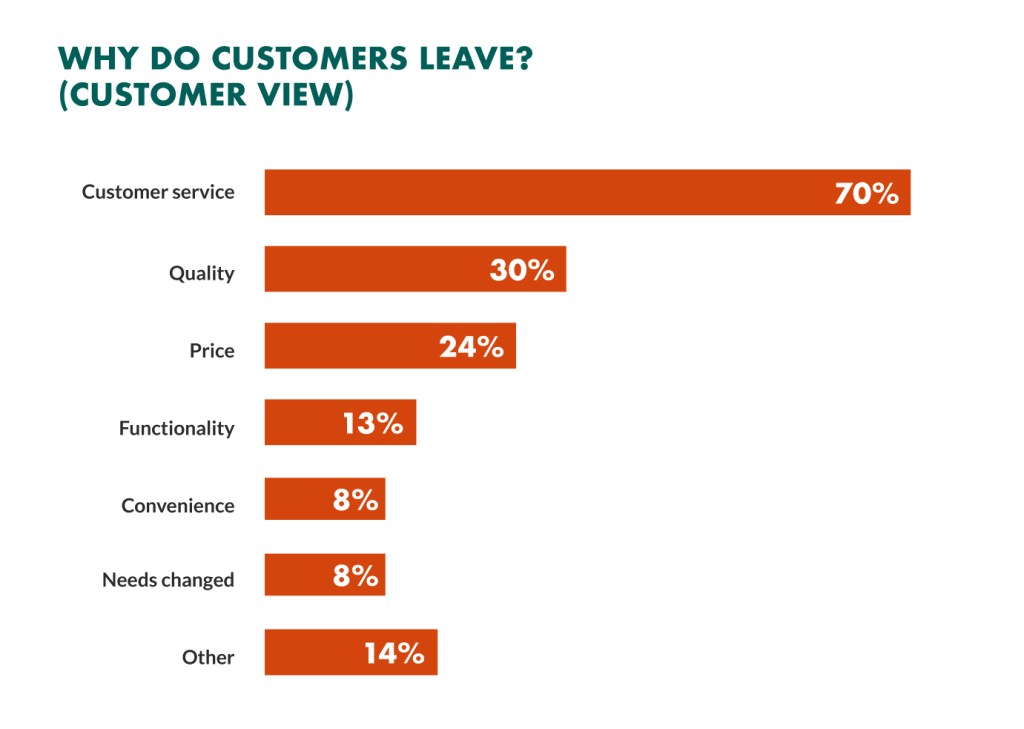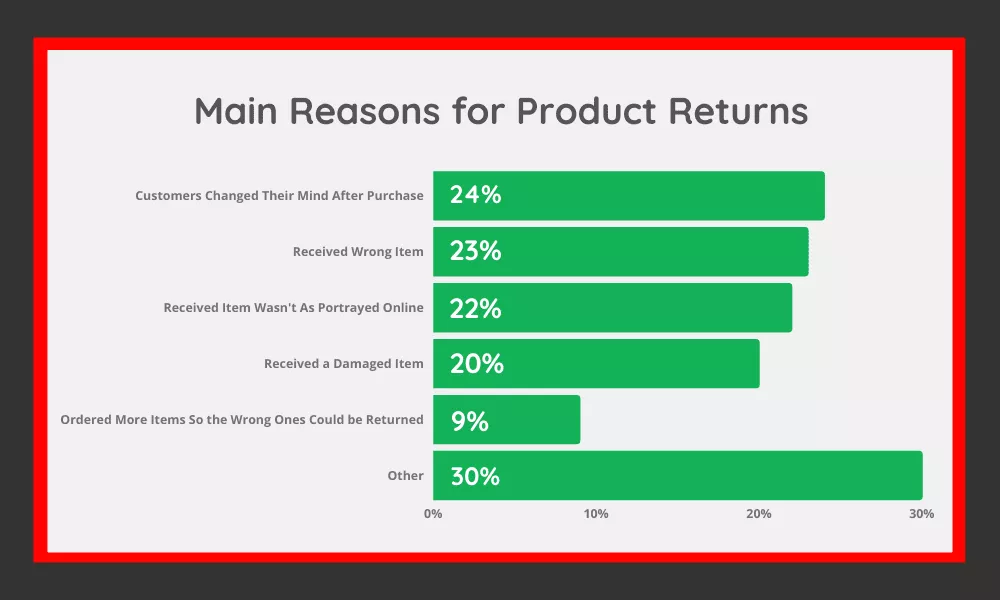

Nick Shaw
Nick Shaw has been Chief Revenue Officer (CRO) of Brightpearl, the number one retail-focused digital operations platform which encompasses sales and inventory management software, accounting, logistics, CRM, and more.
When it comes to your business, old customers are just as important as new ones. More so, in fact; it costs five times as much to attract a new customer than to keep one you already have.
As such, it’s important to think carefully about customer retention management. This guide highlights some key strategies to do so, regardless of your industry.
1. Step back and look at the customer journey
As a business, you’re most interested in the number of sales you’re making. This means understanding a customer’s entire journey. Why is a customer coming to you? What do you offer that your competitors don’t? What is the buying process like?
It’s important to understand the journey towards a sale as one with multiple steps. If any one of these is too difficult, the journey itself won’t be completed. By identifying and assessing each of these steps (e.g. advertising, site layout, checkout process) you’ll be able to deal with many problems at their source.
2. Look for early warning signs
A key element of customer retention management is considering why they’re leaving. Naturally this is a broad question, but there are some clues that you can look out for.
A good starting point is purchasing habits. If a customer regularly buys things from you—only for their purchasing to drop off—this could be a sign something is amiss. If they’ve contacted your customer service team, the quality of your response (or lack thereof) can also help you make an educated guess.

To ensure you cover enough ground, you’ll need some data; if you’ve ever used multichannel order management, you’ll be aware of how useful data can be to your business. Compare a list of customers with your recent purchase history, and look for any discrepancies. This can show you which customers are unhappy, along with any larger problems to be fixed.
3. Reward your customers
The data we just talked about can serve another purpose; identifying which customers are most valuable to you. Rewarding these customers is an excellent way to keep their business; the nature of these rewards is up to you, but some kind of discount is usually popular.
A rewards scheme (targeted at big spenders) is one approach. However, for this to be attractive you may need to employ psychological tricks. Offering a reward upon entry is one winning strategy, as is implying a tier below your target customers. If customers feel – on some level – that they’re more valuable than others, this can make them more likely to participate in a rewards scheme.
You can also imply this worth or superiority by giving members an appealing title. Going with something straightforward like VIP works, but something more informal can work if you’re targeting a younger audience.
As a rule, data-driven decisions are a good strategy for businesses to adopt. Consider your data collection habits and see if they can be expanded.
4. Listen to your customers
If you’re concerned there’s something you don’t know (but your customers do) it’s worth reaching out to them for information. This can be done relatively easily. After narrowing down dissatisfied customers, create a survey for them to fill out. It’s best to keep such a survey simple; focus on asking them what they think you’re doing well, and areas they think you can improve on. This can also help you refine other business strategies, such as AOV marketing.

A key concern in customer retention management is customer service; bad customer service is an easy way to lose a customer. The problem might also be somewhere in your product offering. It may simply be that what you offer doesn’t live up to expectations, or that previous expectations have shifted. Customer feedback can be helpful as it enables you to refine your product offering accordingly.
5. Clarify how your business works
Sometimes, a customer will want to solve a problem themselves. This might mean writing an FAQ to address common concerns. In other cases, you might want to write a service level agreement.
A service level agreement explains what to expect when someone does business with you. It explains what should happen when things go wrong, which is particularly useful if you offer software as a product or service. If you host a website, for instance, you might promise to fix problems like site outages within 48 hours.
A service level agreement also holds you to a certain standard of service. But if this is a standard you feel comfortable in meeting, it’s an excellent way to keep customers invested.
6. Educate people about your product
In addition to clarifying how a business works, you can clarify how a particular product works. This is a great idea if what you offer is especially complicated, or you have a new customer.
You can add tips and tutorials to a piece of software, or produce a separate resource (like a written guide or online video; the chart below shows the popularity of short online videos). You can send somebody a series of emails guiding them through a product’s features. You can even (if you have the time and resources) offer one-to-one training sessions via a customer support or sales team.

If customers know they won’t be left in the (metaphorical) cold, they’re much more likely to stick with your business in the future.
7. Bolster your customer service
Since customer service is such a common sticking point in customer retention management, it’s worth paying attention to it. Remember that customer service is ultimately judged by its ability to solve the problem at hand.
There are several ways to turn unhappy customers into loyal customers. On a basic level customer service should be a source of solace, not stress. Make sure that customers don’t encounter any unexpected obstacles or surprises when they reach out. Equip your staff with the right resources to solve common problems.
A solid strategy is to use the channels your customers like. Live chat has proven a popular choice nowadays, but don’t automatically discount older options like phone support. Use what your customers want you to use.
8. Add a personal touch
Personalisation is a major component of online business nowadays. As such, adding a personal element to your dealings with customers can bolster your customer retention management efforts.
This can be something as simple as adding someone’s name to an email, or something more complex like recommending specific products. Either one is likely to make a customer look upon you more fondly. However, make sure that a customer consents to sharing personal data with you before personalising communications.
Since personalisation is a popular strategy, you may want to look at the flip side; putting a human face on your customer-facing staff. If you use live chat to communicate with customers, having staff introduce themselves by name may be worth considering.
9. Make receiving (and returning) products simple

Even as digital products have risen in popularity, physical objects are still important. If your business sends physical objects to people, take a look at the delivery process. Can people track their deliveries? Is the delivery service itself reliable? Is it fast? The process of receiving a product is as important as buying it, so make sure to plug any gaps or address any concerns.
Make sure it’s easy to return a product as well. Customers returning a product isn’t necessarily a reflection on you; it might simply be that a product isn’t what a customer had in mind. If your business offers a mix of in-store and online services, omnichannel solutions are definitely worth considering.
10. Clarify your business values
Whatever your industry, politics are going to impact what you do—and vice versa. That’s why it’s important to consider your business values, and spell them out to customers.
64% of consumers establish a business relationship based on shared values. If you spell out your values—and you will have some, beyond simple profit—you may lose some customers. But you’re likely to gain more in the process.
In brief
Considering how to attract customers is a crucial part of business, but it mustn’t come at the expense of existing ones. The simplest approach to customer retention management is to offer something they want, but you need to think in a nuanced way about what that actually means. It isn’t just about selling something people want to buy; it’s about making it as easy as possible to do so.
It can also mean meeting a customer on their own terms. This means using services like live chat, adding a personal touch to communications, and ensuring you (on some level) reflect their personal values. By doing these things, you’ll make it easier than ever for customers to stick around.

About the author
Nick Shaw
Nick Shaw has been Chief Revenue Officer (CRO) of Brightpearl, the number one retail-focused digital operations platform which encompasses sales and inventory management software, accounting, logistics, CRM, and more, since July 2019 and is responsible for EMEA Sales, Global Marketing and Alliances. Before joining Brightpearl, Nick was GM and Vice President of the EMEA Consumer business at Symantec and was responsible for a $500m revenue business. Nick has written for sites such as Hubspot and G2. Here is Nick Shaw’s LinkedIn.
Related articles


